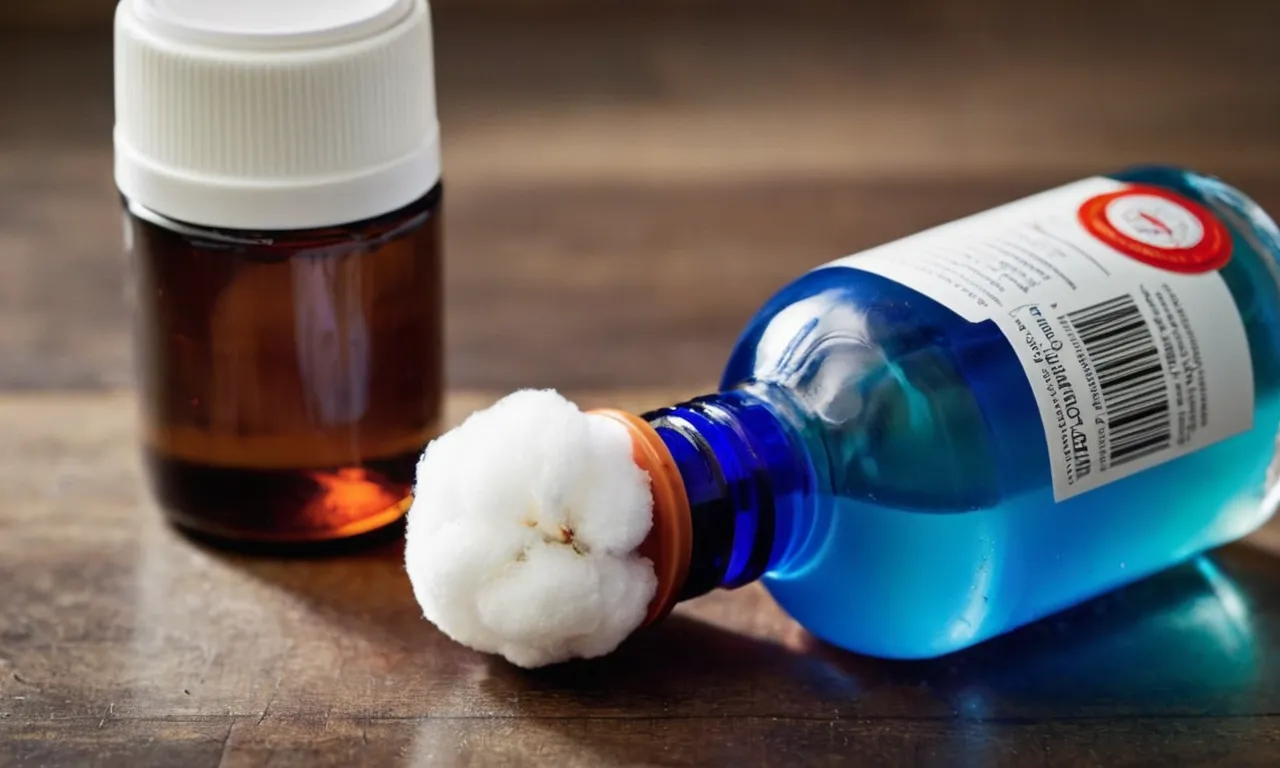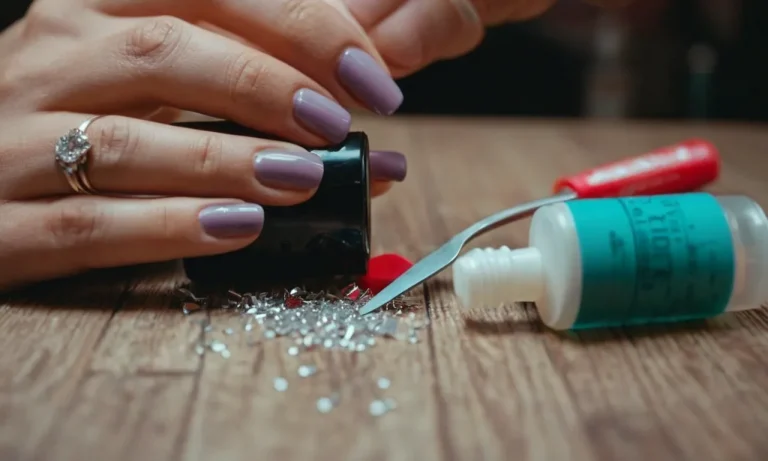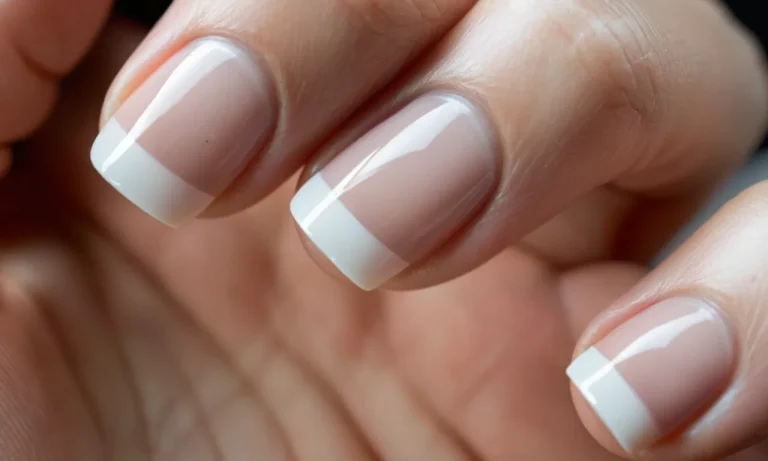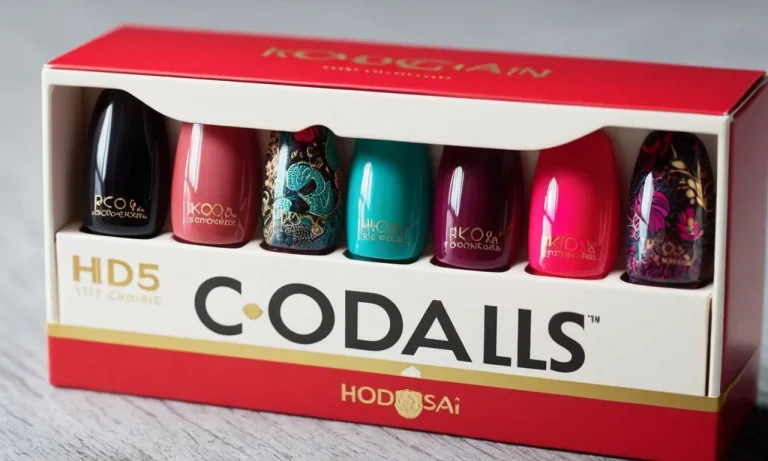Does Rubbing Alcohol Kill Nail Fungus? A Complete Guide
If you’ve noticed yellow, brown, or white spots developing underneath your toenails or fingernails, you may have a fungal nail infection. Trying to get rid of nail fungus can be frustrating, especially if over-the-counter treatments don’t seem to help.
Some people wonder if something as simple as rubbing alcohol can kill nail fungus. Here’s a quick answer: Using rubbing alcohol alone is not an effective way to treat nail fungus. While rubbing alcohol can kill some of the fungus due to its drying effects, it does not fully penetrate the layers of the nail to eliminate the root of the infection.
An antifungal nail polish or oral medication prescribed by your doctor is more likely to successfully cure nail fungus.
In this comprehensive guide, we’ll dig deeper into the details surrounding rubbing alcohol and nail fungus. We’ll discuss the causes of fungal nail infections, explain whether rubbing alcohol can really kill the nail fungus at the source of infection, and provide proven home remedies and medical treatment options for getting rid of nail fungus for good.
What Causes Nail Fungus?
Dermatophytes
Dermatophytes are a type of fungus that commonly infects the nails. These fungi thrive in warm, moist environments and feed on keratin, the protein that makes up your nails. The most common dermatophytes that cause nail fungus include Trichophyton rubrum, Trichophyton mentagrophytes, and Epidermophyton floccosum.
These fungi are spread through direct contact with infected surfaces, including wet locker room floors, public swimming pools, and shared nail tools. Dermatophytes begin by infecting the underside of the nail and slowly spread to cause thickening, discoloration, and distortion of the nail plate.
Yeast
Yeasts are another type of fungus that can infect fingernails and toenails. The most common yeast that causes nail infections is Candida albicans. Yeast infections tend to affect nails that are frequently exposed to moisture, such as the nails on your dominant hand.
People with chronic diseases like diabetes are at a higher risk of developing yeast nail infections. Typical symptoms include redness, swelling, and pain around the affected nails. The nails may also thicken and change color as the infection progresses.
Yeast nail infections are often acquired by coming into contact with contaminated objects or surfaces.
Molds
Molds are a less common cause of nail fungus. Molds thrive in damp environments and produce tiny spores that can infect nails. Frequent exposure to moisture is the biggest risk factor for developing a mold nail infection.
Wearing damp shoes or showering without drying the feet properly can enable mold spores to take hold. People with nail injuries or psoriasis are also more prone to mold infections. The nails become discolored, distorted, and detached from the nail bed as the mold infection spreads.
Some common molds that infect nails include Scopulariopsis, Aspergillus, and Fusarium. Seeking prompt treatment is important, as mold infections can be difficult to cure.
Can Rubbing Alcohol Kill Nail Fungus?
Rubbing alcohol can help treat mild cases of nail fungus, but it has some limitations. Here’s what you need to know about using rubbing alcohol for nail fungus.
How Rubbing Alcohol Affects Nails
Rubbing alcohol contains ethanol, which can kill fungi and bacteria. Applying it directly to an infected nail can penetrate the nail and destroy the fungi causing the infection. It helps dry out and peel away part of the nail, allowing new healthy nail to grow in its place.
Research shows 70% isopropyl alcohol is more effective against nail fungus than lower concentrations. Higher concentrations like 90% may dry out the nail too much. Using 70% rubbing alcohol 1-2 times per day can help clear up mild fungal nail infections.
The Limitations of Rubbing Alcohol
While rubbing alcohol has antifungal properties, it has some drawbacks when treating nail fungal infections:
- It doesn’t penetrate thick nails well – Severe infections cause a thick nail that rubbing alcohol can’t penetrate.
- It doesn’t reach the nail bed – Fungus grows in the cuticle and nail bed where rubbing alcohol has trouble reaching.
- It can dry out the skin – Excessive drying around the nail can lead to peeling, irritation, and infection.
- The fungus can develop resistance – With repeated use, some fungal species become resistant to the effects of rubbing alcohol.
Therefore, rubbing alcohol works best for mild fungal infections limited to the tips of nails. It likely won’t cure a severe nail fungus case on its own.
When to See a Doctor
You should see a dermatologist or podiatrist if:
- More than half the nail is affected
- The infection persists more than 2-3 months with home treatments
- The skin around the nail becomes red, swollen or painful
- Other nails become infected
A doctor can properly diagnose the type of fungus and provide prescription anti-fungal pills, ointments, or laser therapy to effectively treat a severe nail fungus infection from the inside out.
Home Remedies for Nail Fungus
Tea Tree Oil
Tea tree oil is a popular home remedy used to treat nail fungus. It contains terpinen-4-ol, an ingredient with powerful antifungal properties that can kill fungus and yeast (source). Small studies have found tea tree oil to be an effective treatment for nail fungus when used twice daily for 3-6 months.
To use tea tree oil for nail fungus:
- File down thickened nails before applying the oil
- Apply a few drops of 100% pure tea tree oil to the nail twice daily using a cotton swab
- File down the nails weekly to remove dead nail debris
Be sure to use 100% pure tea tree oil and continue treatment for several months to clear the infection from the nail bed.
Vicks VapoRub
The menthol and camphor ingredients in Vicks VapoRub may help treat toenail fungus when applied daily. One study found daily application for 48 weeks cleared fungal infections in over 50% of people (source).
To use Vicks for nail fungus:
- Clean and trim infected nails
- Apply a layer of Vicks VapoRub to the toenail twice daily
- Cover with an adhesive bandage overnight
It may take nearly a year of diligent applications to fully clear an infection. Combining Vicks with oral antifungal medication may also boost effectiveness.
Baking Soda and Vinegar
The antifungal effects of baking soda and vinegar make them a popular home remedy for nail fungus. Baking soda creates an alkaline environment that makes it difficult for fungus to thrive.
To use baking soda and vinegar:
- Combine equal parts baking soda and vinegar into a thick paste
- Apply the paste to infected nails and let sit for 30 minutes
- Rinse and dry feet thoroughly
- Apply daily for several months
The acidic vinegar and alkaline baking soda work together to create an environment that kills fungus. However, it may take 3-6 months of consistent applications to fully eliminate an infection.
Hydrogen Peroxide
As a strong antiseptic, hydrogen peroxide may curb fungal growth and prevent infection when applied to nails. It works by releasing oxygen radicals that can destroy fungus cell walls.
To use hydrogen peroxide:
- Dilute 3% hydrogen peroxide solution in water
- Soak infected nails for 10-15 minutes daily
- Pat dry and apply an antifungal cream
- Consider combining with oral antifungal medications
Hydrogen peroxide solutions under 10% concentration are generally safe for home use. However, higher concentrations can damage skin and nail beds. Use cautiously and limit contact with skin.
Medical Treatments for Nail Fungus
Prescription Medications
Prescription antifungal medications are often the first line of defense against stubborn nail fungus infections. Oral medications like terbinafine (Lamisil) or itraconazole (Sporanox) attack the fungus at its roots and prevent it from growing back.
These medications are taken for 6-12 weeks and have high success rates, with up to 80% of people seeing improvement. However, they can cause side effects like nausea, rash, or liver damage in rare cases.
Topical solutions like ciclopirox (Penlac) nail lacquer, efinaconazole (Jublia), or tavaborole (Kerydin) may also be prescribed. While less potent, they have fewer side effects.
Laser Therapy
Laser treatments for nail fungus utilize targeted beams of light to penetrate the nail and zap away fungal spores. The heat from the laser damages the cell walls of the fungus, killing it at the source. Laser therapy also boosts circulation and may shorten treatment time.
Types of laser treatment like the PinPointe FootLaser or GenesisPlus Laser have shown promise, with some studies demonstrating up to an 87% cure rate. However, multiple treatments are usually needed for the best results.
Side effects are minimal but may include temporary nail discoloration or thickness.
Nail Removal
In severe cases, surgically removing part or all of the infected nail may be necessary. This is often a last resort when other treatments have failed. The removal process is relatively painless since the nail is numbed beforehand.
The nail bed is then scraped clean before applying an antifungal medication so new nail growth is fungus-free. According to research, this method has up to an 80% chance of fully curing nail fungus. The main downside is that it takes several months for the nail to regrow completely.
Proper aftercare is also crucial to prevent reinfection.
Prevention Tips
Keep Nails Short and Dry
One of the best ways to prevent nail fungus is to keep your nails short and dry. Longer nails can trap more moisture and debris under the nail, creating the perfect environment for fungus to thrive. Experts recommend trimming your nails to a short length and filing them smooth.
It’s also important to thoroughly dry your hands and feet after washing, especially between the toes. Water trapped under the nails allows fungal spores to grow.
Wear Protective Footwear
Wearing protective footwear can help prevent fungal infections. Shoes that are well-ventilated and made of breathable materials like leather allow air to circulate and help keep feet dry. Avoid plastic and rubber footwear which traps moisture.
Similarly, wear clean cotton socks that wick moisture away from the skin. Change socks frequently if your feet sweat a lot. Going barefoot in public showers or pools also exposes feet to fungal infections, so wear waterproof sandals or flip-flops.
Disinfect Manicure Tools
Disinfecting manicure tools is crucial to avoid spreading infections. Nail clippers, files and other tools can harbor fungus spores and transfer them from person to person. Make sure your manicurist sterilizes all equipment before and after each use by cleaning with soap and water, then disinfecting with UV light, an autoclave machine, or EPA-approved disinfectants like Barbicide or alcohol.
You should also sterilize tools at home between uses. An at-home nail care kit is ideal.
Avoid Picking at Nails
Picking at your nail beds can cause small tears that allow fungus to enter. Try to avoid biting nails or tearing at hangnails. If you get a snag or ingrown nail, don’t dig around or scrape under nails, which risks infection.
Instead, carefully trim the snag and apply an antibiotic ointment until healed. Keeping nails neatly trimmed and filed helps avoid snags and temptation to pick.
Conclusion
While using rubbing alcohol alone cannot cure a nail fungus infection, it can be used as part of a consistent home treatment plan. Combining the drying effects of rubbing alcohol with antifungal oils, medications, or nail removal may provide relief from fungal nail symptoms.
No matter what remedies you try at home, it’s important to see a doctor if the infection persists or causes you pain, as untreated nail fungus can lead to more serious infections. With the right treatment plan catered to your specific type of fungus, you can get rid of nail fungus for good.







